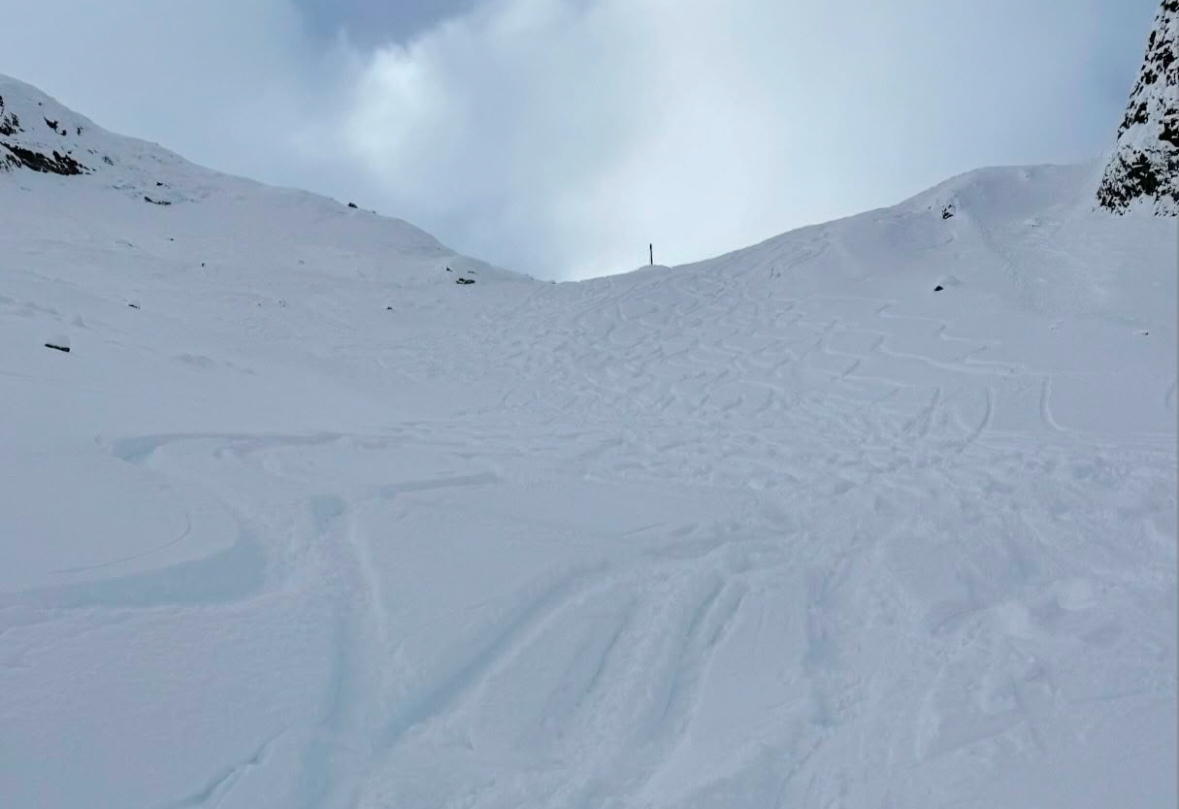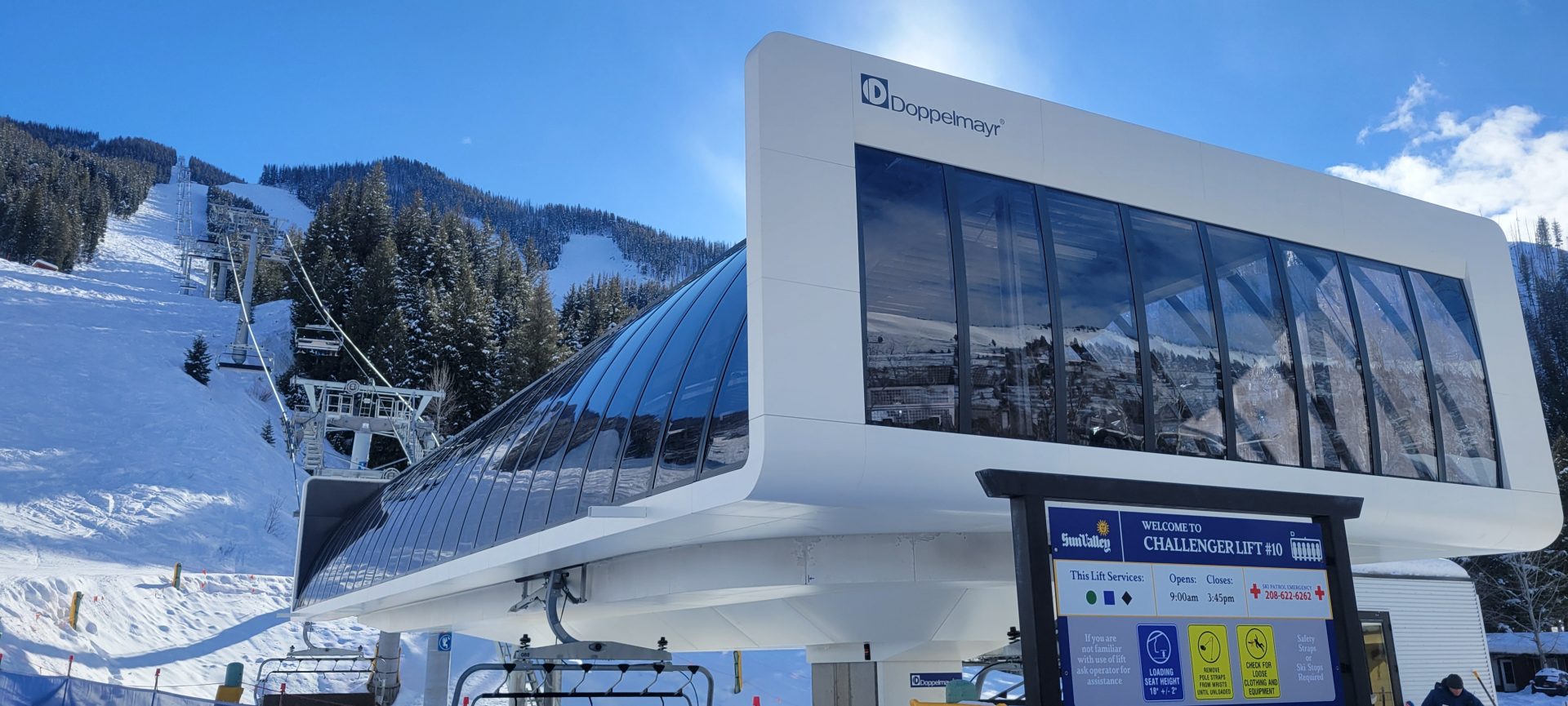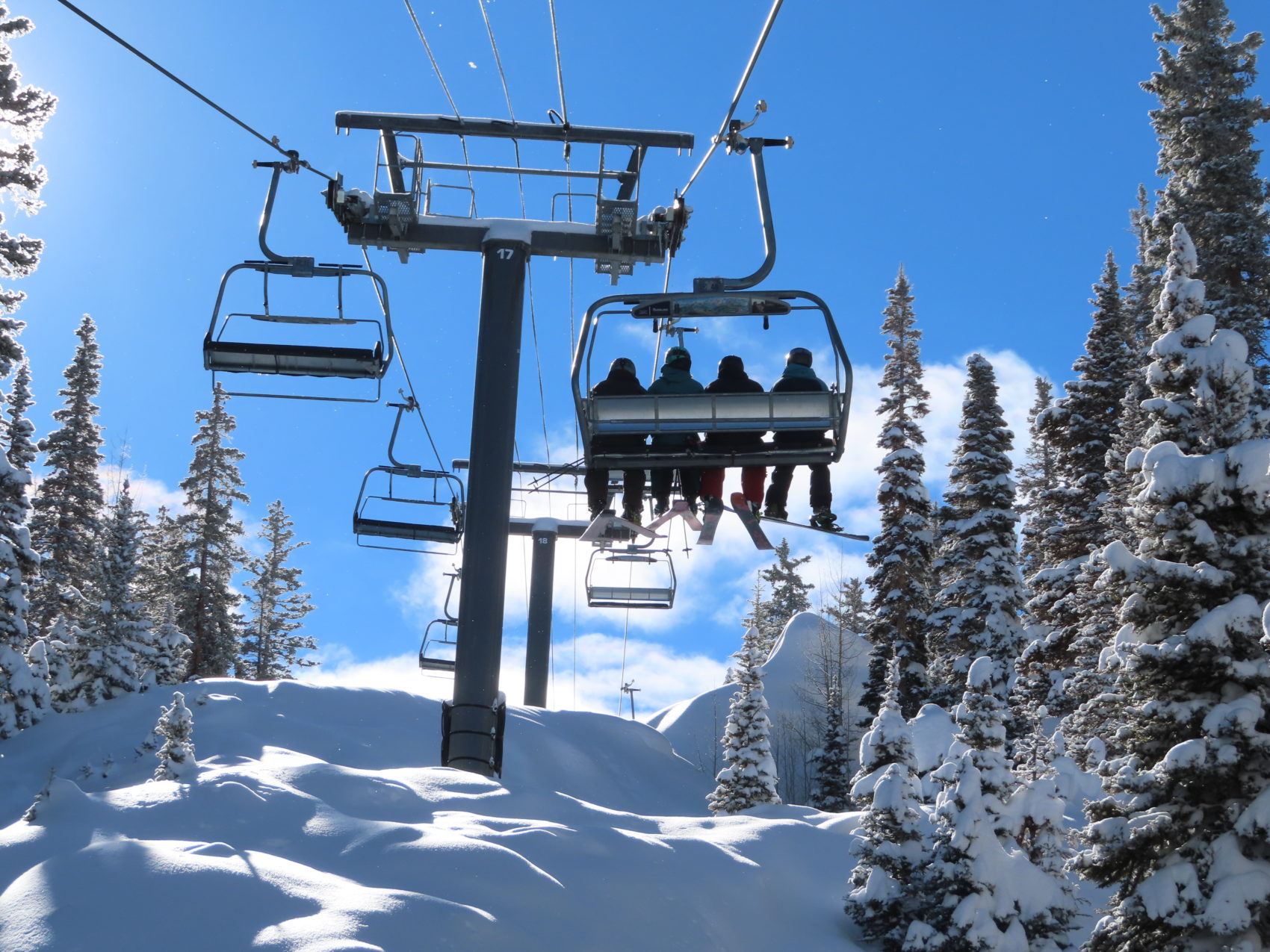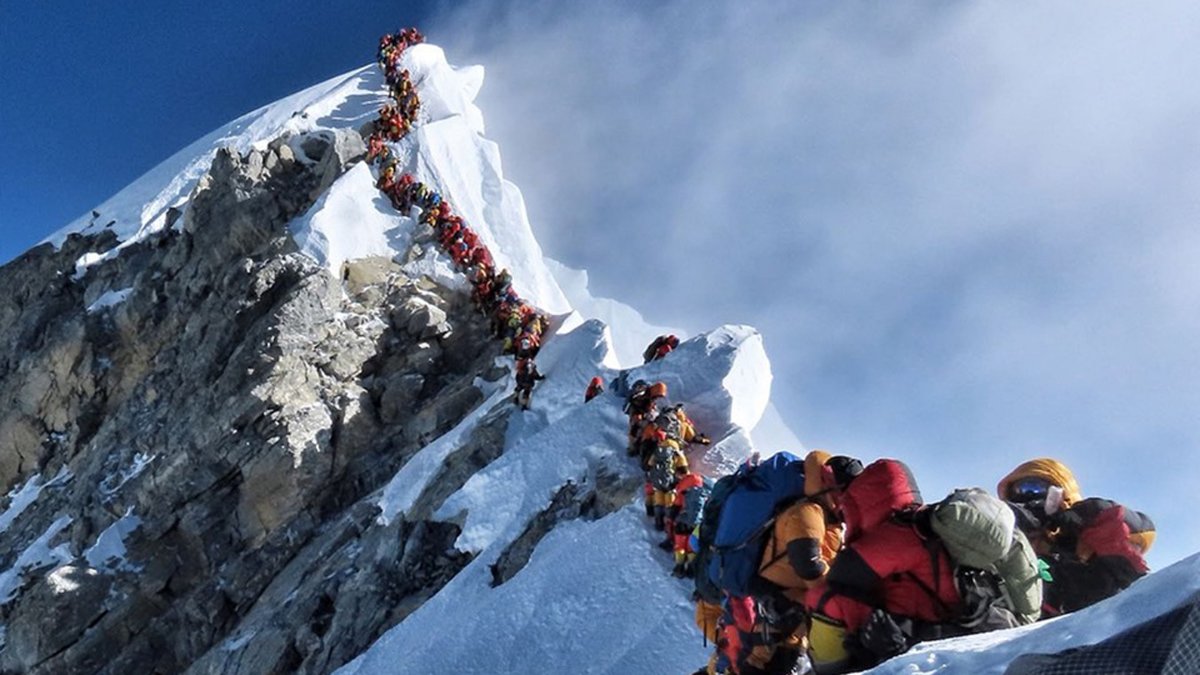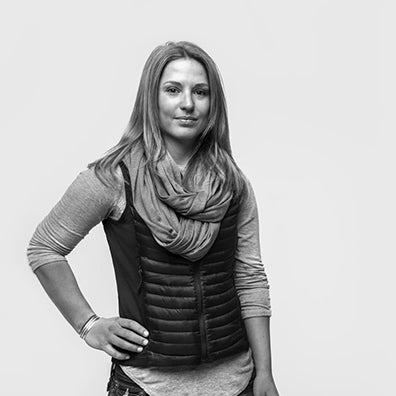
Three years ago, I attended a presentation on Leadership in the Mountains, led by Melissa Arnot. Melissa didn’t look much different from the rest of us dressed in business casual attire with a small athletic frame and a warm demeanor. It is strange when you meet your heroes, and you realize that they are just people too. Still, Melissa is one of the raddest women I’ve had the pleasure of meeting, and I still remember how I sat on the edge of my seat during her presentation, soaking up every word.
Her climbing resume, professional pursuits, and her life story exude a deep passion for not just the mountains but people. She has summited Mt. Everest six times and, in 2016, became the first American woman to summit Mt. Everest without supplemental oxygen. More recently, she completed the Fifty Peaks Challenge (climbing the 50 state high points) in record time: 41 days, 16 hours, and 10 minutes. She has guided on Aconcagua, Kilimanjaro, Ecuador Volcanoes, Colombian Andes, and other peaks in Nepal, as well as Washington’s own Mt. Rainier.
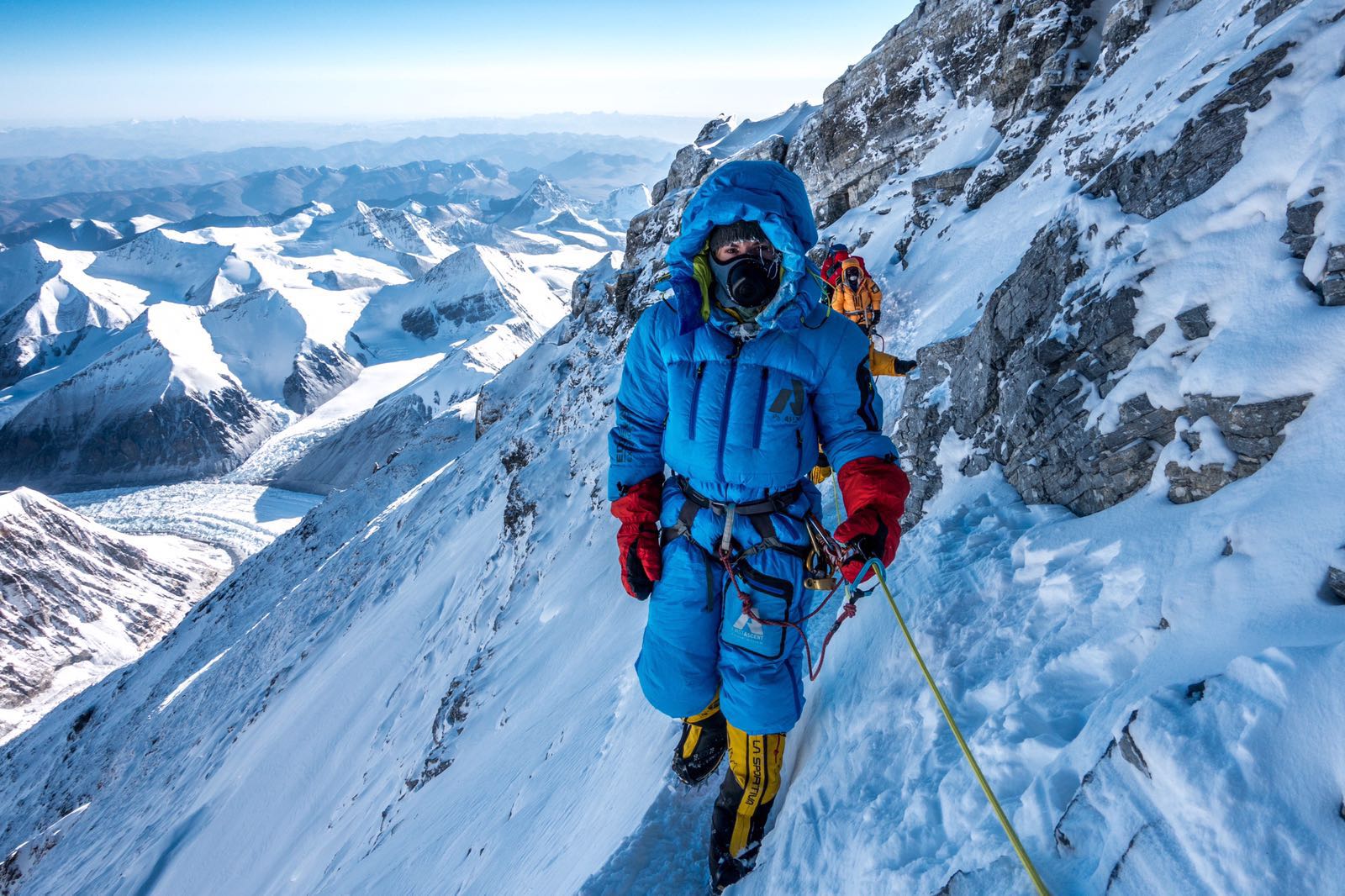
In 2012, Melissa founded the Juniper Fund, an organization which “supports and empowers families and communities impacted by the loss of Himalayan high-altitude workers.” Their work has impacted 48 families, providing them with job training, financial assistance, and business grants. In 2018, NPR reported that one-third of Mt. Everest deaths are made up of Sherpa climbers. Sherpa people are instrumental to the success of most Everest expeditions. They are responsible for setting ropes and ladders at high altitude elevations, guiding clients, assisting in carrying gear and supplies, mitigating risk, and even helping in dangerous high altitude rescues. Without the Sherpa people, climbing Everest for a foreigner would virtually be impossible. Sherpa climbers on Everest make a salary 10x what the average Nepalese worker makes, according to NPR. Their income supports multigenerational families. Avalanches, icefalls, high altitude sickness, floods, hypothermia… these are just some of the main causes of death for high altitude climbers. Sherpa put their lives at risk just to go to work every day.
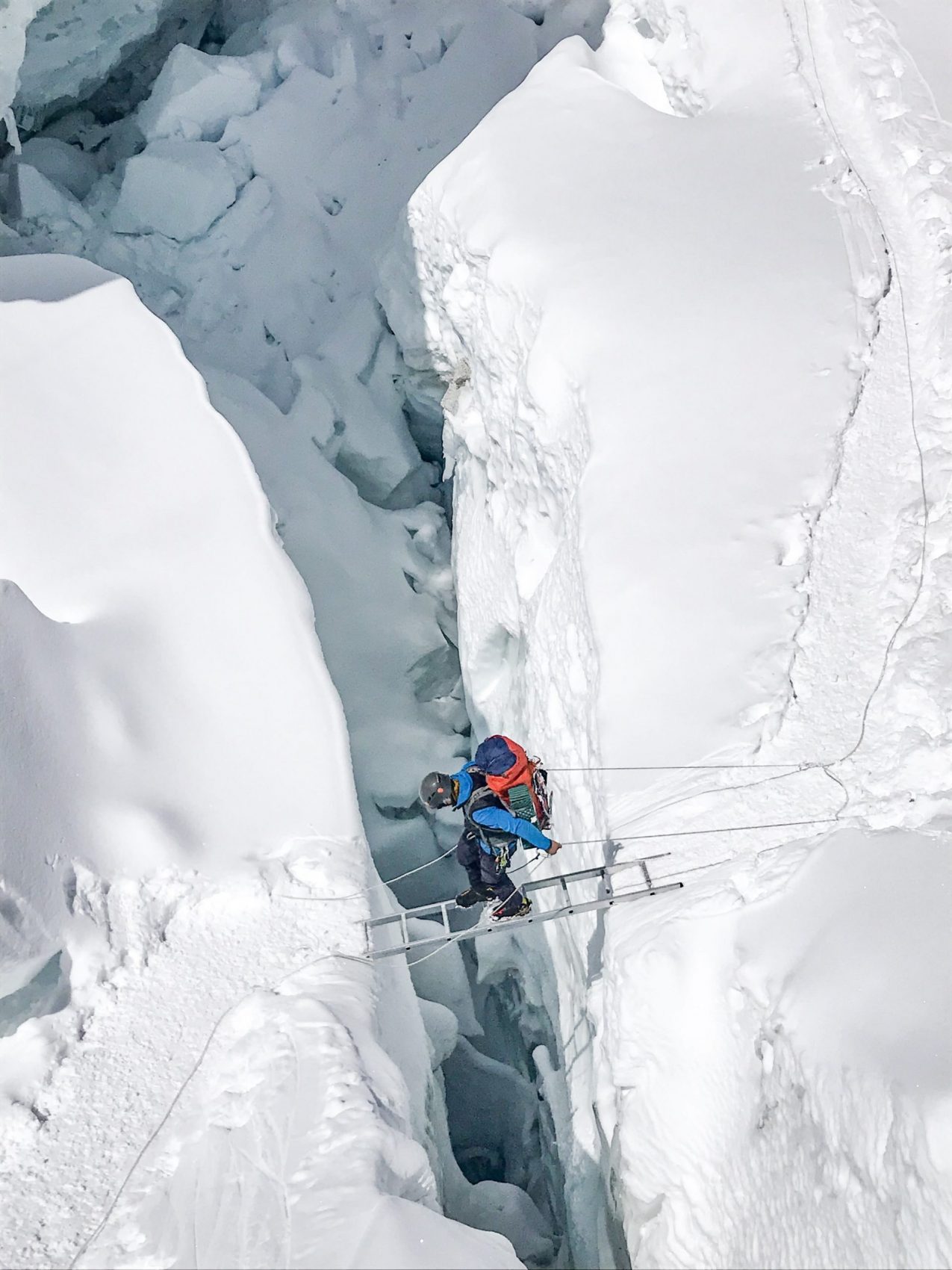
While I researched this article, I enjoyed reading the personal stories of the families that the Juniper Fund has impacted. My favorite story was about a woman named Kam Futi Sherpa, a wife of one of the Sherpa who tragically passed in the 2014 Everest Avalanche, a catastrophe that led to the deaths of 12 Sherpa workers. Kam embodies one of the core values of the Juniper fund: empowerment. With their financial help and vocational training, she was able to take cooking classes and now owns a restaurant on a popular trekking route. What I love most about the Juniper Fund is that while some of their grants are specifically designed for different purposes, they also offer grants with a lot of financial freedom – meaning that the recipients can put the money to something they choose. Several families have allocated some of the money to build memorials for their lost loved ones.
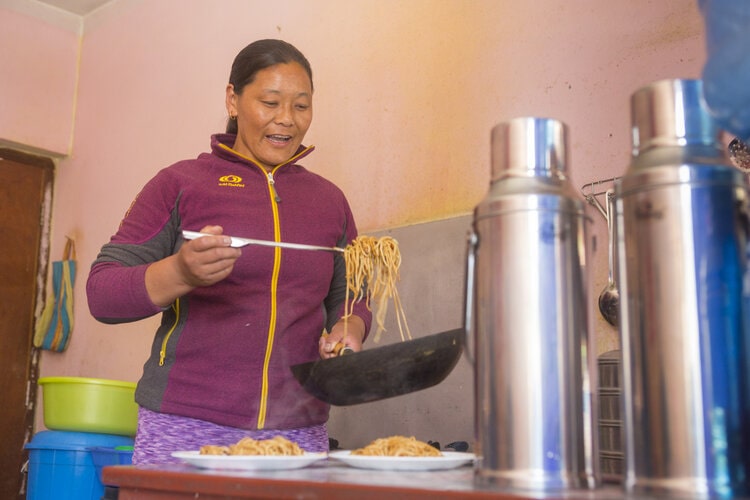
Melissa’s presentation highlighted her work with the Juniper Fund. I was enraptured by her stories from Mt. Everest, watching in awe as she showed a video of her climbing on the final push. At the end of the presentation, there was an auction to raise funds for the Juniper Fund. I put my name down on a bid for a Mt. Rainier climb led by Melissa and her own guiding company. While I am a huge skier, semi-okay rock climber, and decent hiker, I had never done any mountaineering before. Thinking I wouldn’t win the item, I laughed as I thought about how crazy it would be for me to go on that climb. Later that afternoon, I found out that I had won the item. Crap.
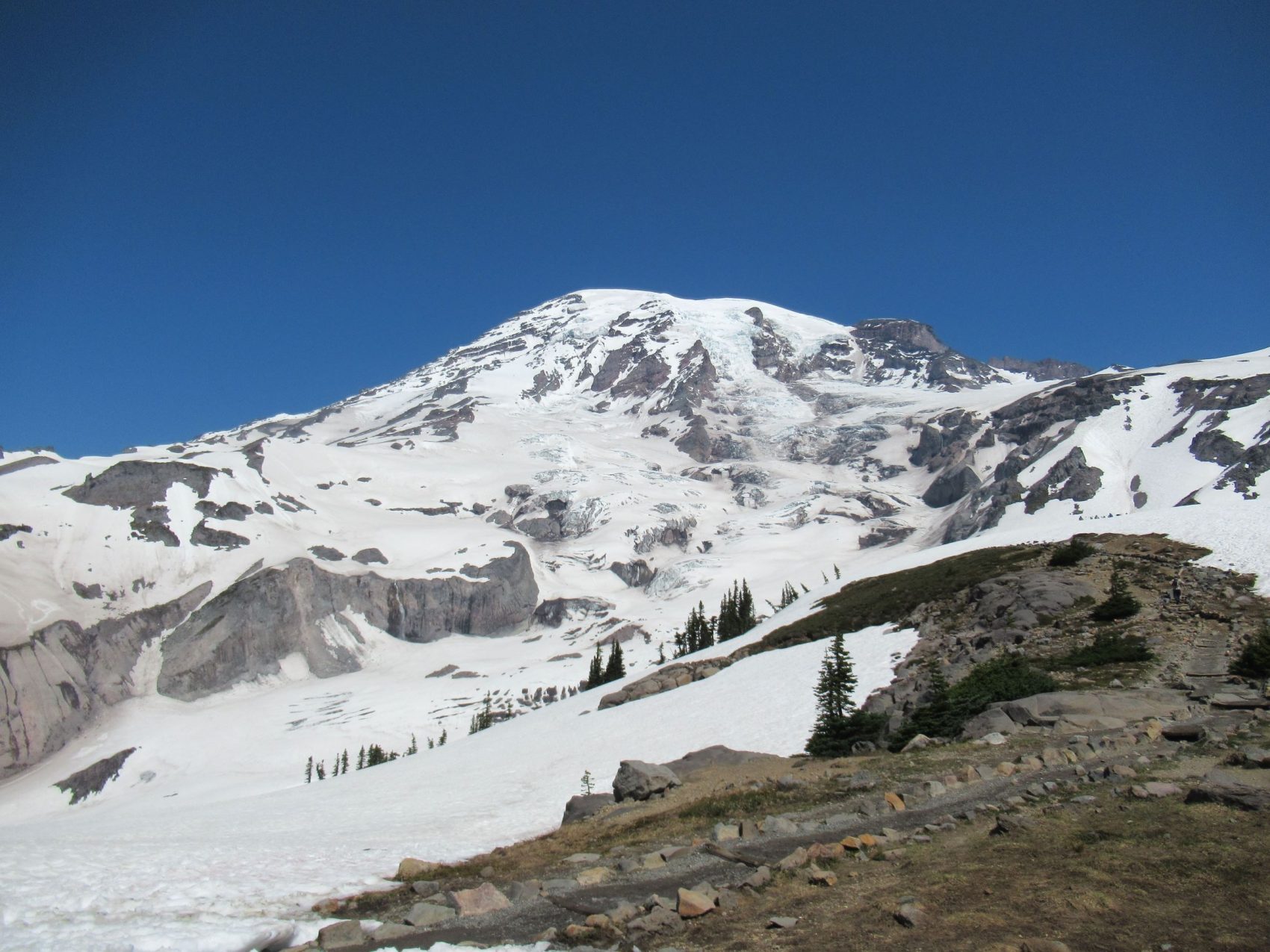
The first summer I was set to climb Mt. Rainier, I backed out because I didn’t feel physically or mentally prepared. I postponed my climb to the next year––2020. While the world was in lockdown, the Juniper Fund still managed to host the climb but had set up extra precautions such as single tent occupancy at Camp Muir. At the height of the pandemic, I decided to postpone my climb one more year. This year, I put myself through a tumultuous roller coaster of decision-making. Some days, I was sure I was going to do the climb. I was stoked about it and getting more excited. But others, I was scared, uncertain, and feeling unprepared. As months turned into weeks, I realized that it wasn’t my time to climb this year. It is a decision that I had to make and one that I still sometimes question. However, I was fortunate to be able to transfer my spot in the climb to my brother, Bryan, who was stoked to receive the opportunity. I knew he would be physically and mentally ready for the climb, and I was also excited for how much he would learn about the mountains. Our family has always shared a love for the outdoors, but my brother is one of the more fearless adventurers in our family. He asked me if I was sure about giving him the climb. And I said, “Absolutely. Go learn as much as you can. And then, take me again sometime.”
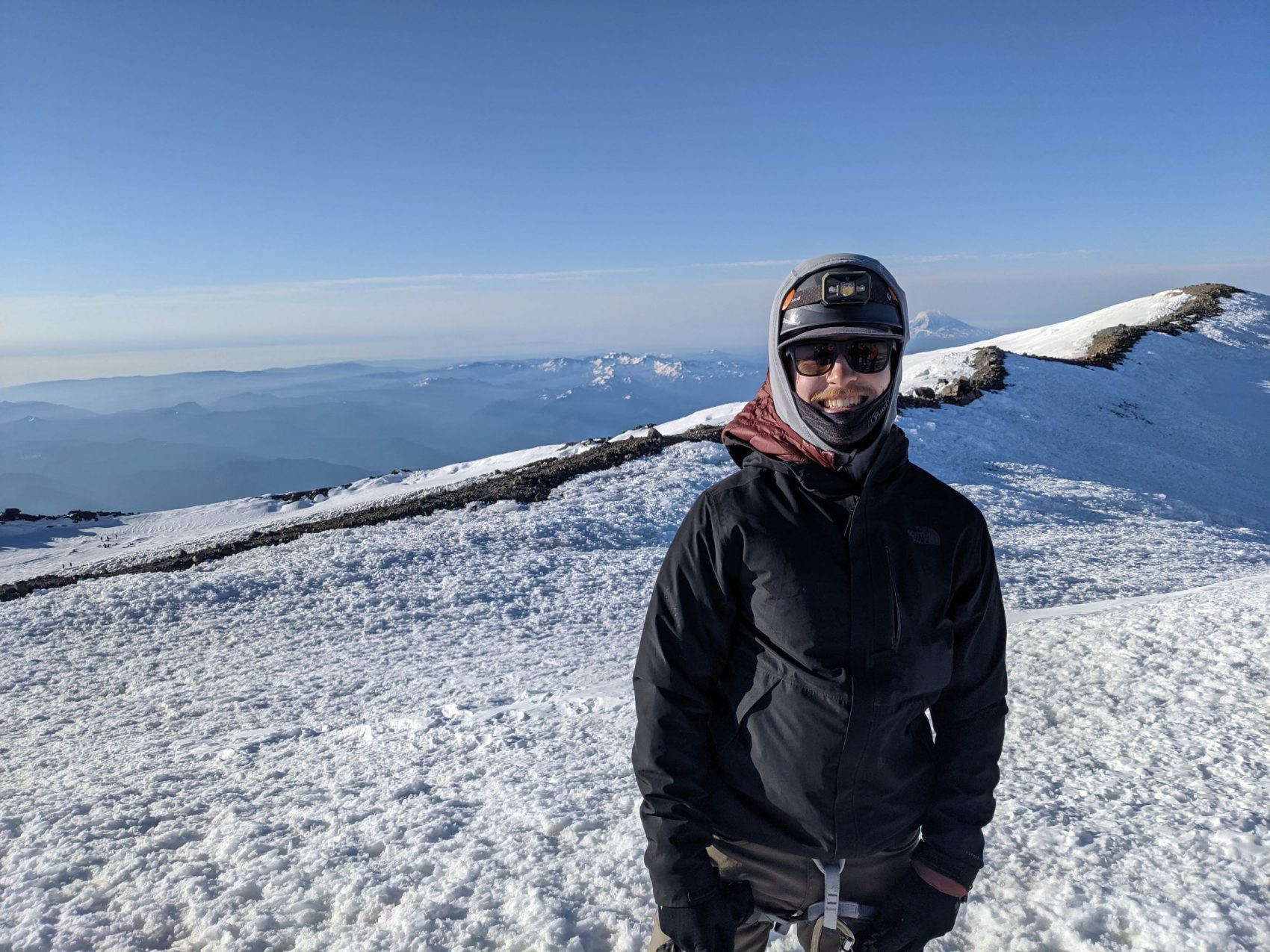
The group, including my brother, successfully summited Rainier early in the morning on June 22, 2021. Also on the climb was my long-time friend and professional climber, Audrey Sniezek. It was exciting for me to look out my window at Mt. Rainier and knowing that two very important people in my life had just been to the top. After they made it down safely, they shared their stories with me. Audrey is also the author of a blog, and she wrote about her experience there. One of my biggest fears about climbing Mt. Rainier is rather silly. I wondered about the small issue of using the facilities… on a wide-open glacier while connected to a rope team. As it turns out, it was a valid fear. Audrey described to me how they were limited in how far they could travel away from the group to take care of business, as everyone had to be roped up for safety. While it is awkward, Audrey gives some good advice: “Whatever you gotta do, do it fast.” Bryan came away with a new set of tools under his tool belt. He called me on his drive home from Paradise, talking excitedly about how rad the guides were and how much he had learned from them. One guide, Sid Pattison, had just summited Everest two weeks before. I thought back to Melissa’s presentation on leadership in the mountains. Like one of the main themes of the Juniper Fund, this climb empowered those on it to not only summit a mountain but also consider what was possible in life. It allowed them to zoom out for a moment and consider life from a 14,000ft view.
“Whatever you gotta do, do it fast.”
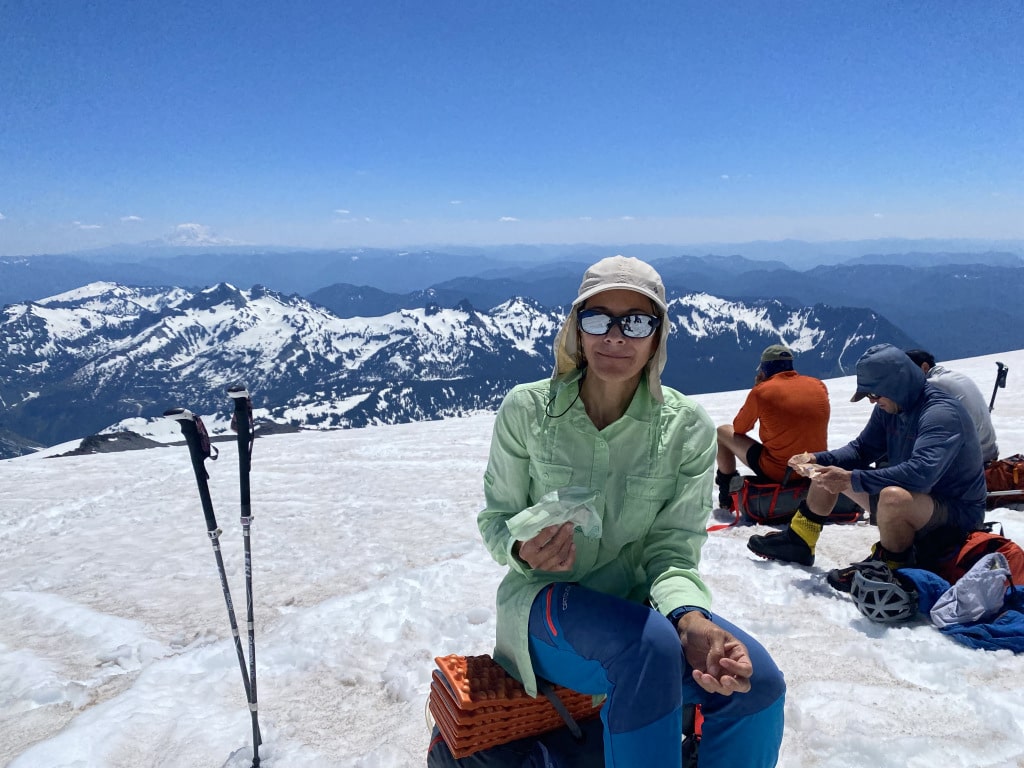
I don’t know if I will ever summit Mt. Rainier. Perhaps I prefer to ski down mountains instead of climbing them. And yet, even though I didn’t go on the climb itself, I am thrilled that I enabled someone else to achieve their dreams. A few weekends later, my brother took one of his close friends to Camp Muir to ski down. His friend is from the East Coast and didn’t grow up in the shadow of massive volcanoes like my brother and me. Without the learnings he gained from the Juniper Fund climb, I don’t think my brother would have felt he had the tools to confidently go to Muir with his friend safely. Seeing my brother’s passion and desire to share his experiences makes my heart happy. I think that’s what the Juniper Fund might be all about: learning, growing, and sharing with others.
If you are interested in going on a fundraising climb or donating to the Juniper Fund, please check out their website to help support the global mountaineering community.
Bonus: Watch Melissa Arnot Speak!
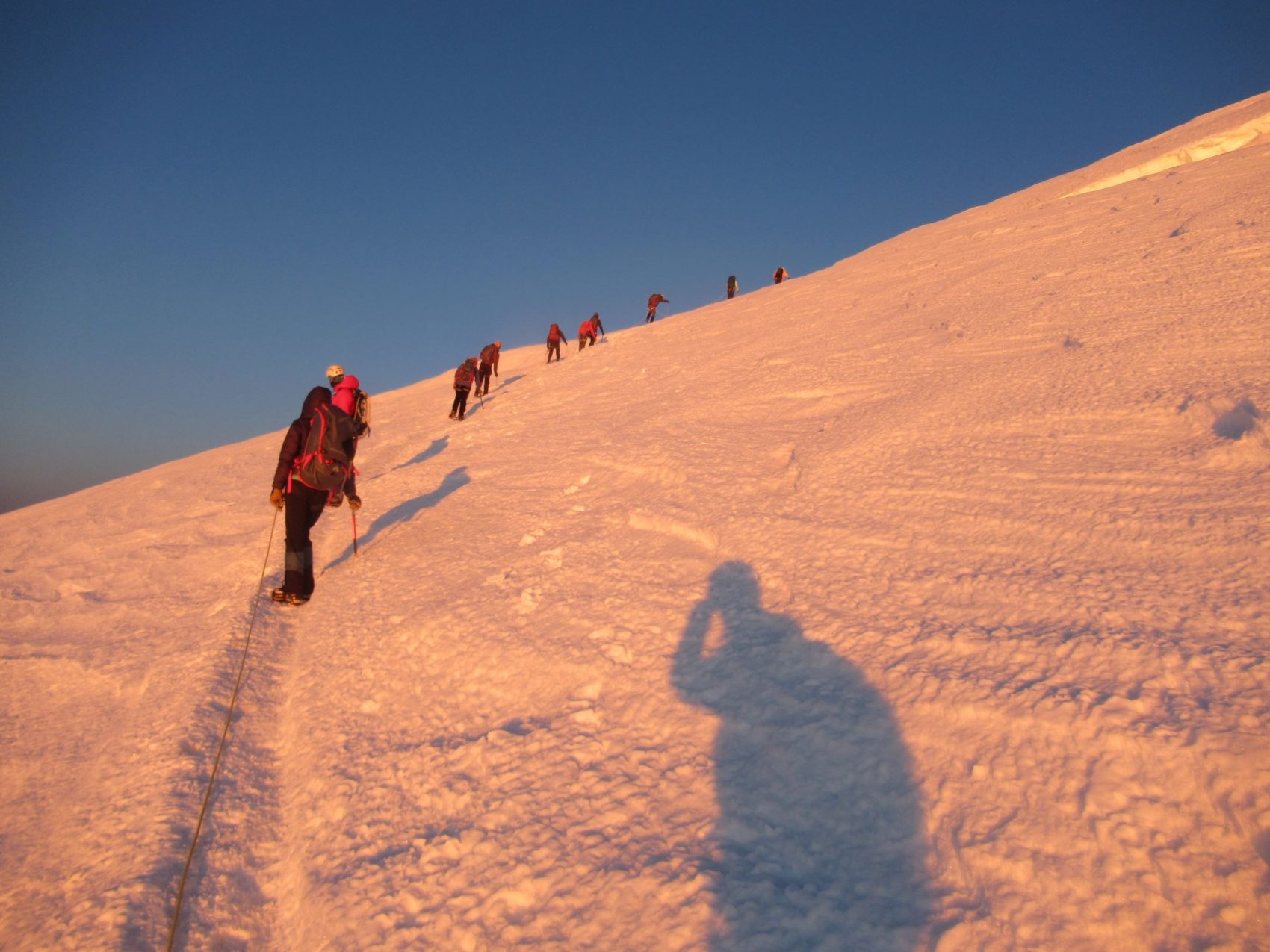
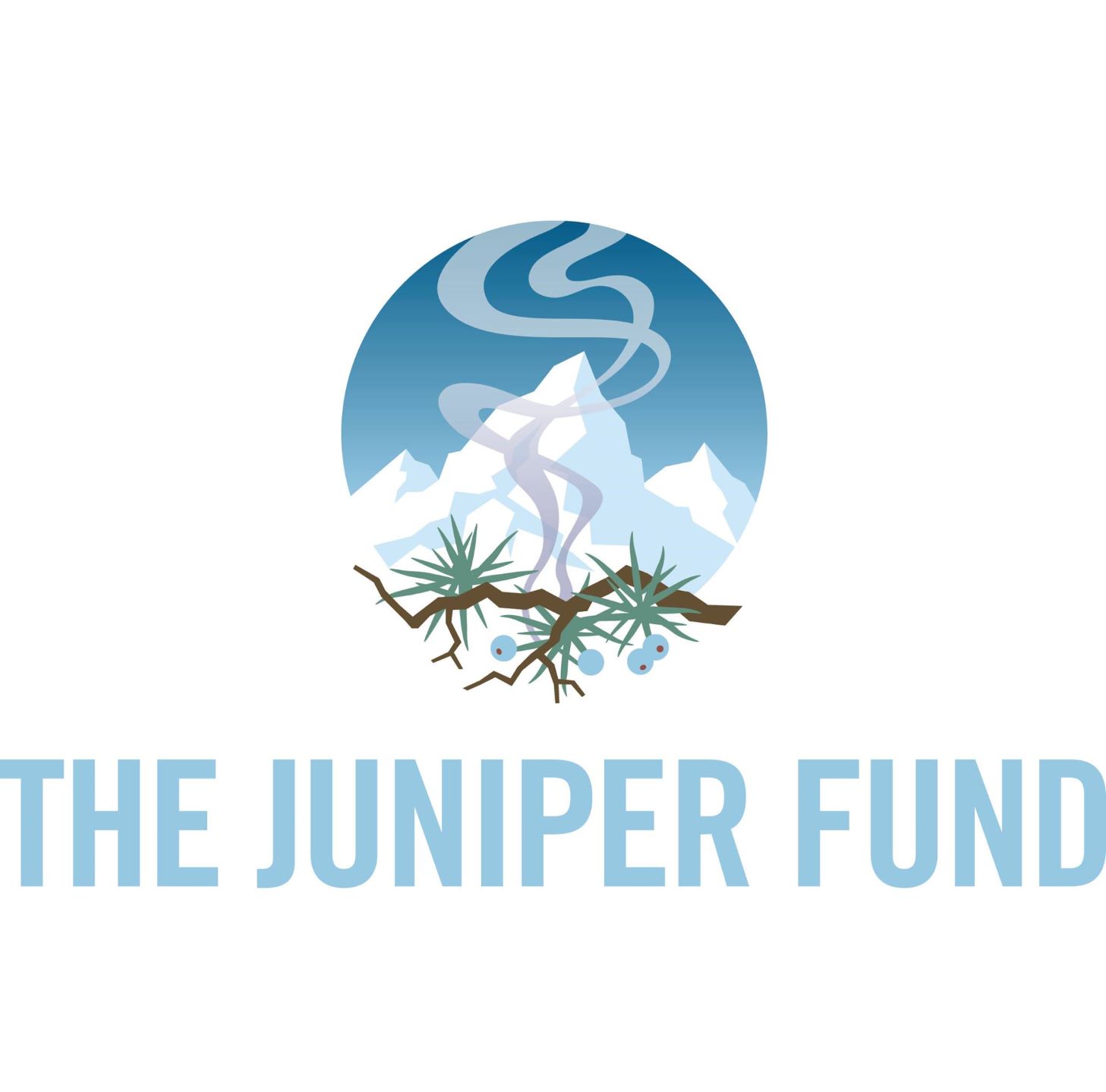
References:

